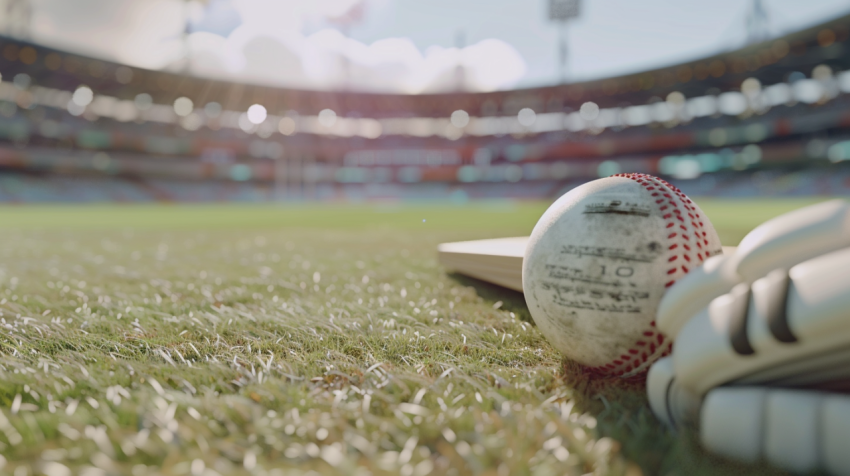

Cricket: A Comprehensive Guide to Rules, Formats, and the Global Game
Cricket is a bat-and-ball sport played between two teams of eleven players each on a field with a 22-yard pitch at its center. This guide provides a comprehensive overview of cricket, covering its fundamental rules, different formats, major international competitions, rich history, and essential techniques.
Basic Rules of Cricket
- Objective: The objective is to score more runs than the opposing team.
- Gameplay: One team bats, attempting to score runs, while the other team bowls and fields, trying to restrict the runs scored and get the batsmen out.
- Innings: A period of play during which one team bats. Matches can have one or more innings per side.
- Overs: An over consists of six consecutive legal deliveries bowled by a single bowler.
- Runs: Scored by the batsmen running between the wickets (sets of three wooden stumps at each end of the pitch) after hitting the ball, or by hitting the ball to the boundary.
- Ways to Get Out: There are several ways a batsman can be dismissed (out), including:
- Bowled: The bowler hits the stumps directly with the ball.
- Caught: A fielder catches the ball after it has been hit by the bat without it bouncing.
- Leg Before Wicket (LBW): The ball would have hit the stumps but was intercepted by any part of the batsman's body except the hand holding the bat.
- Run Out: A fielder dislodges the bails from the stumps with the ball while a batsman is out of their ground.
- Stumped: The wicket-keeper (a specialized fielder behind the stumps) dislodges the bails with the ball when the batsman is out of their crease and not attempting a run.
Formats of Cricket
- Test Cricket: The longest format, with matches lasting up to five days. Considered the ultimate test of a team's ability and endurance.
- One Day International (ODI): Matches are limited to 50 overs per side, typically lasting around 8-9 hours.
- Twenty20 (T20): The shortest and most fast-paced format, with matches limited to 20 overs per side, lasting around 3 hours.
Key Positions
- Batsmen: Players who try to score runs.
- Bowlers: Players who deliver the ball to the batsmen. They can be fast bowlers, medium pacers, or spin bowlers.
- Wicket-keeper: A specialist fielder who stands behind the stumps on the striker's end.
- Fielders: Players positioned around the field to stop the ball and try to get the batsmen out.
Major Cricket Competitions
- ICC Cricket World Cup: The premier international championship for ODI cricket, held every four years.
- ICC T20 World Cup: The premier international championship for T20 cricket, typically held every two years.
- ICC World Test Championship: A league competition for Test cricket, culminating in a final match to determine the champion team.
- The Ashes: A historic Test series played between England and Australia.
- Indian Premier League (IPL): A popular and lucrative professional T20 league based in India.
- Big Bash League (BBL): A professional T20 league in Australia.
- Other Domestic Leagues: Many countries have their own domestic cricket leagues and competitions.
History of Cricket
- Origins (16th Century): Cricket originated in England, likely in the 16th century.
- Early Development (18th Century): The sport became more organized, with the first recorded match taking place in 1709 and the formation of the Marylebone Cricket Club (MCC) in 1787. The MCC was responsible for creating a standardized code of laws for cricket.
- International Cricket (19th Century): The first official Test match was played between Australia and England in 1877.
- 20th Century and Beyond: Cricket spread throughout the British Empire and beyond, becoming a major international sport. The introduction of limited-overs cricket (ODI and T20) revolutionized the game, making it faster-paced and more appealing to a wider audience.
Essential Cricket Techniques
- Batting:
- Stance: A balanced and comfortable position at the crease.
- Grip: The way the bat is held.
- Shots: Various shots, including drives, cuts, pulls, and sweeps.
- Bowling:
- Run-up: The approach to the bowling crease.
- Delivery Stride: The final step before releasing the ball.
- Action: The sequence of movements involved in bowling the ball.
- Types of Bowling: Fast bowling, medium pace, spin bowling (off-spin, leg-spin).
- Fielding:
- Catching: Securing the ball in the air after it has been hit by the bat.
- Throwing: Returning the ball to the wicket-keeper or other fielders.
- Ground Fielding: Stopping the ball and preventing runs.
Conclusion
Cricket is a complex and strategic sport with a rich history and global following. From the traditional format of Test cricket to the fast-paced excitement of T20, the sport offers a variety of formats that appeal to different audiences. With its unique blend of skill, strategy, and athleticism, cricket continues to captivate fans and players around the world.
Cricket, cricket news, cricket scores, cricket live, cricket schedule, cricket world cup, IPL, Test cricket, ODI cricket, T20 cricket, cricket rules, cricket teams, cricket players, cricket batting, cricket bowling, cricket fielding, cricket history, cricket highlights, cricket records, cricket rankings

